Early Strategy 1861
Early Decisions
Upon the loss of Fort Sumter, the Lincoln administration ordered the states to provide 75,000 troops serving for 90 days to force the states in rebellion back into the Union. Unwilling to participate in military action against sister slave states, several border state conventions those in Virginia, North Carolina, Tennessee and Arkansas (with Kentucky deciding to remain neutral) voted to leave the Union and join the Confederate States of America. The leaders in these states had wanted to remain in the Union. They were forced to chose between going to war against fellow slave owners or joining them. Virginas, Arkansas, North Carolina and Tennessee joined the CSA.
This gave the CSA a northern border of the Ohio River, a southern one of the Gulf of Mexico, the Atlantic Ocean to the East and Texas to the southeast. It also gave the CSA control of New Orleans, the Mississippi River and the rivers which flowed into it. This galvanized the Midwest states to support a war to regain control.
Early Actions
The Union meanwhile declared an embargo around these boundaries with the intention of preventing the export of cotton et. al and the importing of enumerated lists of goods as dwell. 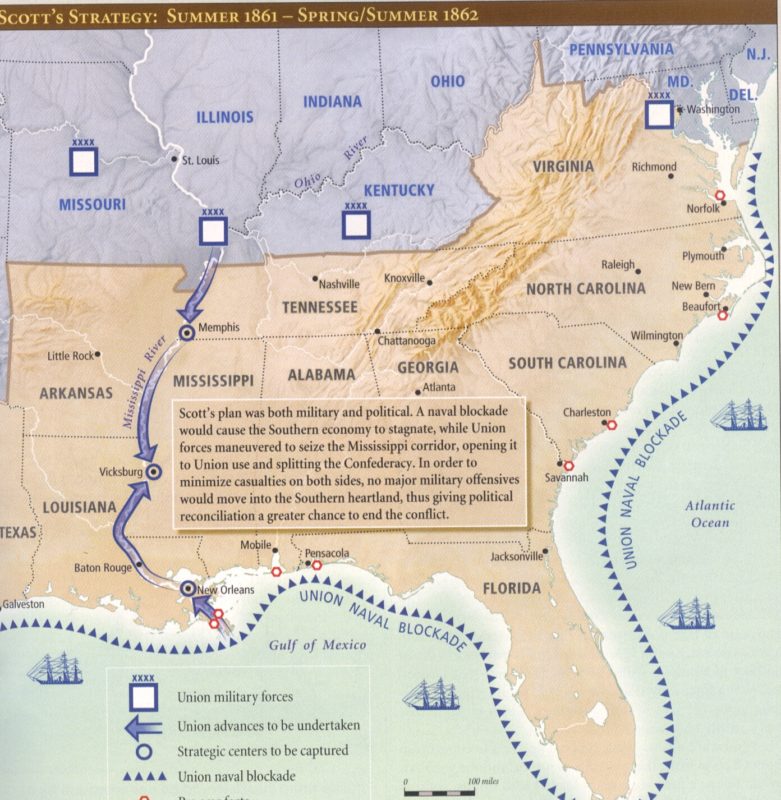
Because the CSA had no navy, the Union had the advantage even with it’s small sea going navy. Neither side had a river navy.
The leaders of the Confederate States decided to defend all their borders. On the face of it, even then, this was seen as a difficult goal. For example, the barrier islands of South Carolina and Georgia could not be held and were immediately abandoned to the Union.
And, with such a long border to defend, the CSA had the challenge of responding to northern attack at points of the Union’s choosing. The CSA was forced to respond as best it could along a very extended border. And, on top of all that, the longer the conflict lasted the stronger the Northern position would become.
Long Term Goal of the Confederate Government
So, Confederate leadership decided on the long game and a defensive rather than an offensive approach to the war with the North. They decided to make the people of the North pay dearly in blood and treasure.
They hoped to defeat the Union armies often enough and inflict enough casualties often enough that the people of the North would force Lincoln to give in and let them go. After all, they only wanted to be free of Northern domination and to be left alone. They would still be good customers for Northern manufactured goods, financing, shipping and agricultural products like grains.
“Lincoln’s Tariff War.” European newspaper headline.
Despite this, after the Confederate Congress passes a low import tariff (a revenue tariff), in March 1861, it was feared by Northern leaders that the low tariffs of the CSA would give an advantage to European suppliers and thus ruin the Northern economy. So, they changed their mind and instead of opposing war (‘war is bad for business’) supported Lincoln’s determination to restore the Union by force, if necessary.
War in the East
General Scott’s Plan for the Conduct of the War
In response to President Lincoln’s request, his chief military adviser, General Scott sugesssted the following:
- Blockade the South: prevent exports as well as imports.
- Recover control of the Mississippi River and it’s tributaries.
- Conduct a holding action in the East, refraining fro
 m invading CSA territory in the East.
m invading CSA territory in the East. - Create and train an army of 250,000 men. Soon after the Lincoln administration announced the blockade of Confederate ports, the Northern press began the drumbeat, ‘On to Richmond”. They popularized the notion that the capture of the newly announced capital of Confederate government, Richmond, Virginia would end the war of rebellion. Such a military objective was not part of the early plan. Never-the-less, the press continued the demand. The press even suggested Lincoln was weak and possibly a traitor.
His cabinet wrestled with the issue.They, and Lincoln too, toyed with the notion of invading the South with their untrained and newly formed army camped south of Washington City. General McDowell cautioned restraint. He reminded them that his army was untrained. Lincoln and his cabinet members listened and instead ordered him to invade Virginia with the objective of ending the rebellion with one major battle.
The first Battle of Bull Run: June 1861
At the end of the day, the Union forces were routed;. the army was shattered; most of the equipment lost and Washington City was opened to capture. It was not, but the notion of a quick war was over. Suddenly, As General Scott had predicted, this war would be protracted and expensive in blood and treasure.
POPULATION CONTROL IN THE CONQUERED AREAS OF THE WEST
AREAS CONTROLLED
The victory at Shiloh gave the Union complete control over Kentucky and virtual control of the western half of Tennessee: over 50,000 square miles of territory. Thereafter, the problem of population control became important. Even though there had always been many Unionists in both Kentucky and western Tennessee, the majority of the people there had been Confederate supporters. So, it was not surprising that many became reluctant citizens of the United States. In fact, many men from these two areas served in the armies of the CSA to the end of the war.
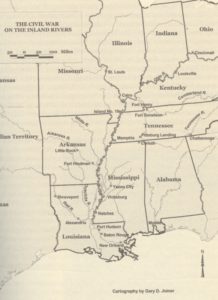
EARLY GOVERNANCE
Early in the conflict, Union General Horatio G. Wright was commander of the Department of the Ohio and in charge of dealing with the people of these conquered areas. He initiated a very aggressive policy toward people who had shown favor/support toward the Confederate States of America. Thousands were arrested. Their arrest was usually based upon the word of Unionists. Some of these suspected supporters of the CSA were sent South; others imprisoned at Camp Chase in Ohio. All of them had their property confiscated. Some were hung.
LATER GOVERNANCE
Because of extensive guerrilla warfare and the resulting disruption in this area, Martial Law was declared by President Lincoln in 1864. In Kentucky, he gave command to General Stephen G. Burbridge. THis charge was to discourage and punish disloyalty. Toward that end, Burbridge issued Order # 59 which declared:
“Whenever an unarmed Union citizen is murdered, four guerrillas will be selected from the prison and publicly shot to death at the most convenient place near the scene of the outrages.”
Burbridge directed the arrest and execution of many people on charges of treason even though most of which was unproven. During the 1864 presidential campaign, he even arrested McClellan supporters including Lt. Governor Jacob and a Judge Bullit and sent them South to Richmond, VA. His harsh administration caused much resentment and made it difficult to heal the wounds of civil conflict.
.
War in the West: The Capture of Corinth Mississippi

Corinth, Mississippi
Called the “Crossroads of the Confederacy”, Corinth, Mississippi was the strategic point at the junction of two railroad lines vital to the Confederate States of America; the Mobile and Ohio Railroad and the Charleston Railroad. Both rail lines penetrated south as far as Mobile on the Gulf of Mexico, east to Charleston on the Atlantic Ocean and West to Memphis on the Mississippi.
Leroy Walker, the CSA Secretary of War, called Corinth, Mississippi “the vertebrae of the Confederacy”.
After the Battle of Shiloh, Union General Halleck said, “Richmond and Corinth are now the great strategic points of the war…”
General P.T. Beauregard said of this rail center: “If defeated here, we lose the Mississippi Valley and probably our cause.”
So, following the battles of Shiloh and Island #10 on April 7, 1862 it was decided that Corinth would be the next target for the Union forces in the West. Toward that end, General Halleck ordered three armies to gather at Pittsburg Landing, Tennessee: Grant’s Army of the Tennessee, Buell’s Army of the Ohio, and Pope’s Army of the Mississippi. So, before the end of April, Halleck had assembled almost 120,000 seasoned troops for the attack on the Corinth rail center.
In Corinth, Confederate General P.G.TS. Beauregard had nearly 68,000 men with which to defend the strategic town. After several weeks of siege by Halleck’s Union force, Beauregard saved his army from capture by slipping away on the night of May 30, 1862.
Meanwhile, a Union flotilla under the command of Flag Officer Charles Henry Davis met and defeated a Confederate naval force at Fort Pillow. This was a Confederate stronghold on the Mississippi River between Island 10 and Memphis.
On June 6th, Davis led his flotilla in another attack. This time, he met in battle a Confederate naval force of equal size. They met just north of Memphis. In only 90 minutes, his force sunk seven of the eight Confederate boats while many of the people of Memphis watched from the city’s heights. The Davis force gained a complete victory and also secured the surrender of the city of Memphis.
This gave the Union control of the Mississippi River from Cairo, Illinois south to Vicksburg, Mississippi. With the capture of Corinth and Memphis, the way was clear for the Union army to attack Chattanooga, Tennessee in the East and Vicksburg, Mississippi in the West.
Terror in the South: The KKK and the Union League
Terror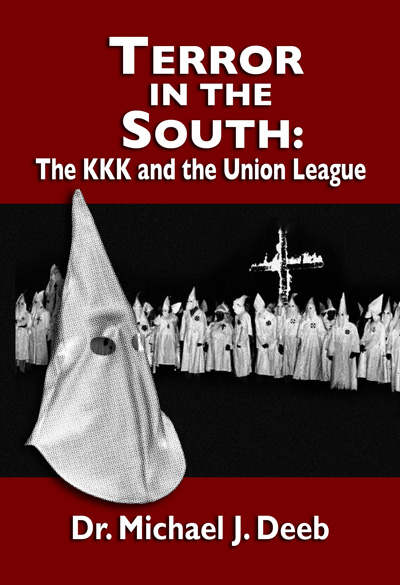 In The South: The KKK and the Union League.
In The South: The KKK and the Union League.
This book is now available for purchase.
Go to www.civilwarnovels.com to order your copy. Once you pay for it on Pay Pal, I will be notified and will ship you a properly dedicated and autographed copy.
You may wish to go to Amazon and order it instead. There you must pay shipping and the book is not autographed.
This historical novel is the eighth book in the Drieborg Chronicles. Marshal Michael Drieborg and his wife, Mary Jacqueline to to Georgia at the request of his mentor, Congressman William Kellogg. There, Mike’s team encounters the leaders of the local Freedman’s Bureau and their military arm, the Union League.
Once their mission in Georgia is concluded, they then take their son Charles to Edisto Island in South Carolina. There, he joins the island locals in successfully fighting off the attacks of the other southern terrorist group, the KKK.
You can order your copy of this exciting historical novel at amazon.com or through my website at www.civilwarnovels.com.
The Battle of Shiloh: Aftermath
The Battle of Shiloh: Aftermath
The northern press was awash with stories of the horrific battle casualties suffered at the battle of Shiloh. It was understandable, since the two sides between them suffered more deaths at that battle than in all the conflicts in the Unites history up to that date.
Despite the victory, the reporters also blamed General Grant for the loss of life. Reporters at the scene wrote that he had not set up a proper defensive perimeter for his encampment. they also claimed that he had ignored information that would have warned of the attack. They added that he was not at the scene when the attack began. Instead, they said, he was enjoying a breakfast in a comfortable plantation miles upriver from Pittsburgh Landing.
And, most damning of all, it was widely claimed in the northern newspapers that Grant was drunk when the Confederate attack struck. Historians have said that General Halleck, Grant’s superior, gave credence to such claims in his reports to Washington. He used these press stories and the uproar in the North over casualties as justification for his demotion of Grant and his take-over of the command of the the army himself. And he did just that.
In response to the pressure to remove Grant, President Lincoln said:
“I can’t spare this man; he fights.”
And on the Confederate side, the death of General Albert Sidney Johnston was seen as a major loss. President Davis mourned his friend and said:
“Better we had lost a State of the Confederacy.”
But they did that anyway. Kentucky was lost never to be restored. They had also lost two major two major battles in the West since the first of the beginning of 1862. An army of over 12,000 men was lost at one of those battles in February. In April over 11,000 men had been killed at Shiloh.
After Shiloh, both Kentucky and western Tennessee were permanently lost to the Confederacy along with Nashville, the state capital. Only Chattanooga, in the East, needed to be taken for complete domination of the state.

Also, following that battle, the critical rail center at Corinth, Mississippi came under attack by a Halleck led Union army of over 100,000 men. That important rail center would also soon be lost tot he Confederacy permanently, too.
Due West, on the Mississippi River, Flag Officer Andrew Foote’s mortar barges pounded the fortified Island #10 at New Madrid, Missouri into surrender on April 7th, too. This followed a land operation under General Pope to capture the nearby town of New Madrid.
The next target on the Mississippi for the Union’s Western Flotilla under Admiral Porter would be Memphis, Tennessee. (June 6, 1862)
Meanwhile, Lincoln responded to all the political intrigue surrounding his armies by reorganizing his military command structure. First, he removed General McClellan as General-In-Chief for his lack of achievement in the East. Second, he took General Halleck from the West and brought him to Washington replacing McClellan. Third, after an investigation proved Grant was not drinking before, during or after the Shiloh battle, Lincoln promoted him to be in charge of all military activity in the West.
One last comment on the consequences of the Shiloh battle; In his memoirs years later, Grant wrote of the battle,
“Up to the battle of Shiloh, I , as well as thousands of other citizens, believed that the rebellion against the Government would collapse suddenly and soon if a decisive victory could be gained over any of its armies. Donelson and Henry were such victories … but they resumed the offensive and made such a gallant effort to regain what had been lost, then, indeed I gave up all idea of saving the Union except by complete conquest.”
The Battle of Shiloh Begins
The Battle of Shiloh Begins
It was the weekend of April 5th & 6th, 1862. Grant’s headquarters was in a riverside home a few miles upstream form Pittsburg Landing. He was on crutches, and very irritable. He was recovering from an injury to his leg suffered when his horse stumbles and fell on him. He was awaiting the arrival of General Buell and his 25,000 men. Grant knew Buell and thought of him as having the ‘slows’. In any case, Buell was expected soon.
Grant’s force had their backs to the Tennessee River and were bivouacked facing South. Because of the temporary nature of the encampment, it was said, little was done defensively. That meant that the men were not encouraged to dig entrenchments on their southern flank facing the Confederates in Corinth. As it turned out, pickets and mounted patrols were not stationed far enough out to give adequate warning of attack from that direction, either. In fact, on the Sunday morning of April 6th, General Sherman was irritated with reports by his patrols of activity south of his encampment.
Confederate General Albert Sidney Johnson had his headquarters some ten miles South. He was in the process of gathering a force equal to that of Grant’s. He even took soldiers from as far away as New Orleans. He was expecting several thousand seasoned soldiers from Arkansas as well. There, CSA General Van Dorn, like Grant’s General Buell, had a case of the ‘slows’. He was expected very soon, too.
Johnston knew of Buell’s troop movement toward Pittsburg Landing and hurried to launch an attack on Grant’s force before the Union force was reinforced by Buell. Johnston was confident that he could drive Grant into the Tennessee river, then swing and face Buell’s force. A victory against each of them in turn, would reverse the effects of Grant’s victory at Forts Henry and Donelson. this would thus reestablish Confederate control of Nashville and western Tennessee. But Johnston knew it was imperative to attack Grant before he was reinforced by Buell.
And, he managed to do so, just barely.
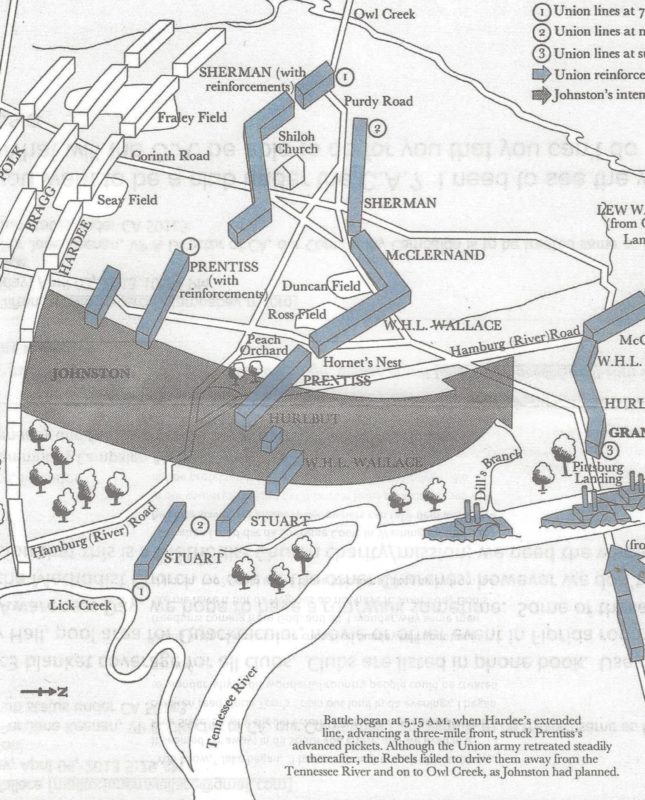
In preparation he directed his second-in-command, General Beauregard to come up with a plan of attack. By the time the plan was ready it was already the beginning of April. General Johnston was not ;leased with the clumsy nature of the plan but refused Beuregard’s suggestion to delay while it was fixed. Johnston knew that time was not on his side. So, he drove his commanders forward.
But the Lord had other plans and sent torrential spring rains to create a morass of mud which slowed Johnston’s advance to a crawl. His men had been give three days rations to complete the march North. But instead, by the time they managed to reach the point of attack, four days had passed. With rations exhausted, some men broke the needed silence of the approach to hunt game. Johnston drove forward, just the same.
Despite the noise and the confusion and effort of the difficult march, the attack came as a surprise to Sherman’s troops. They were enjoying a leisurely Sunday morning breakfast when they first heard the ‘Rebel Yell’ and the sound of the Confederate cannon. It began a virtual route.
But the Confederate’s did not take advantage of the situation. Many of the first rebel troops to enter Sherman’s camp paused to pillage. Others stopped to eat the breakfast prepared by the fleeing Federals. Even some of their inexperienced officers joined their troops. As quickly as possible, Johnston ordered the next Confederate units in line to pass through the stalled initial attackers and renew the advance.
However, the opening momentum had been largely lost. and with it, Federal officers had been given time to c alm the initial panic of their men, to slow the retreat and to form a defensive line with enough men to blunt the impact of the surprise attack; at lease long enough for other Federal units to join the battle.
The area chosen for Grant to gather his men (Ptitsburg Landing) and the site of the battle of Shiloh, was different from most land on which Civil War battle had been or would be fought. It was different in that once the fighting joined the awful terrain of Pittsburg Landing made control of the fighting forces almost impossible. Thick bushes with oak and other hardwood forest cut by deep ravines, man filled with water from the recent rain, ridges and mucky swamps dominated the battlefield.
Because of this, the battle broke down into over 150 individual fights between units as small as as companies and regiments; most of them out of sight of one another.
The confusion caused by the land was made worse since most of the men on both sides were green who were led by untested green officers. In the Confederate army, most all the junior officers had been civilians prior to the battle.
Never-the-less, Johnston’s Confederate force drove Grant’s back to the river. By late afternoon, the water of the Tennessee River was so high and the reb forces to close that the two federal gunboats on the river could fire grape shot into the advancing Confederate troops. General Johnston believed that one more push would man victory for his forces.
But it was not to be. Johnston’s second in command was ill and in his absence his aide, Colonel Taylor refused to release needed ammunition to the critical areas when it was needed. It was at this important juncture that several thousand of Buell’s troops arrived and helped bolster the Federal lines. Dusk was approaching on the battlefield and the Confederate troops were near exhaustion and low on ammunition.
At this very juncture, General Johnston caught a stray bullet and died.
Once notified of Johnston’s death, Beauregard ordered the attack halted. He decided it was too late in the day to continue the battle, his force too exhausted, too disorganized and in need of supplies. Besides, he thought, Union General Buell was still a day or two away from Pdittsburg Landing. Better to review the battle the next morning. He telegraphed his superiors in Richmond that despite the death of General Johnston, a great victory had been won.
However, during the night, boat after boat unloaded General Buell’s fresh Union troops at Pittsburg Landing. In the morning, it was Grant’s reinforced army that renewed the attack, not the Confederate’s. And it was the Union force which won a great victory not the Confederate’s.
In the next newsletter I will go over:
The Aftermath of Shiloh
The Civil War Horse
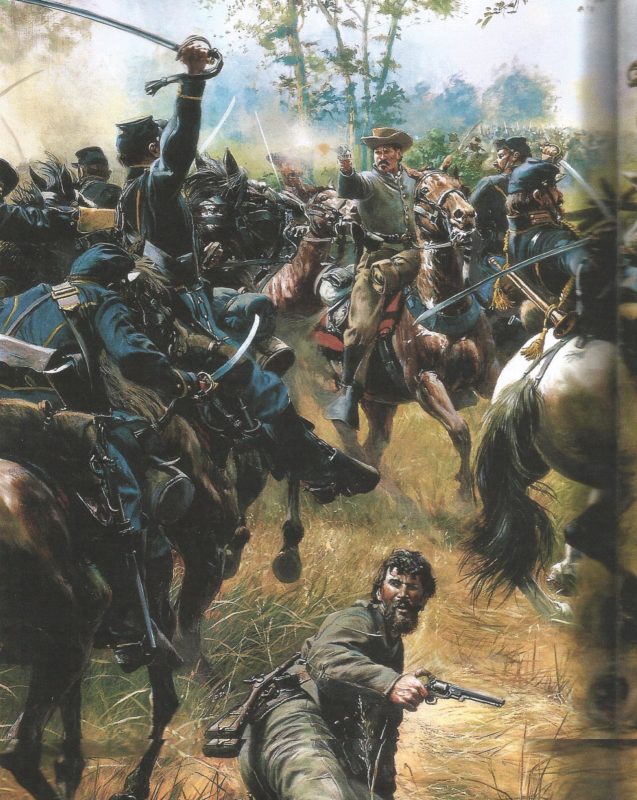
Essential to the Conduct of the War
The horse was essential during the Civil War era. It not only carried thousands of men into battle but pulled artillery pieces throughout the war. Countless wagons full of supplies were pulled by horses as well.
It is reported that the Union army alone used over 850,000 horses during the conflict. This figure does not include the animals confiscated from farmers. The cost to the Union is said to be in the neighborhood of $124,000,000. No Union cavalryman had to supply his own mount.
Complete records for the Confederacy are not available. But it is reliably reported that a Confederate trooper had to supply his own horse. Should a rebel cavalryman lose his mount, he became an infantryman.
Artillery
Artillery use was the worst duty assigned horses on either side. Each gun was pulled by six horses. Each gun also had three ammunition chests pulled by another six horses. Twelve horses were assigned each gun and its crew.
During any battle, horses remained in harness some thirty or forty feet behind their cannon. Horses were regular targets whenever they came within musket range of the enemy. When a horse was killed, it was necessary for the men to remove all the harnesses and transfer them to a living horse. Sometimes, the horses were wounded or killed faster than the harnesses could be switched.
Normal Use
Our most common image is that of a horse ridden my an individual. Such a trooper and his mount could cover about 35 miles a day without seriously taxing the horse or his rider. Normally, the pair could travel four miles an hour at a walk and sixteen miles an hour at a gallop. During marches the trooper would ride for an hour at a walk and then walk alongside his mount for fifteen minutes or so.
Raiding
On a raid, however, both the horse and its rider were severely taxed. They would normally travel as fast as possible without a stop. Thus, many horses were lost to exhaustion, dehydration and hunger. In such circumstances, horses were not given time to recover their strength. Instead, once exhausted, they were shot on the spot rather than be left and thereafter used by the enemy.
Common Problems
The most common disability suffered by the military horse was lameness. These were usually hoof problems. Such a problem could be caused by stone bruise, hoof rot, grease-heel or an infected hoof. A trooper’s lack of daily attention to his mount was the most common cause of lameness. Sore back was another common problem. Once again, poor care by a trooper was the cause. In combat zones, rather than wait for the horse to recover from such ailments or wounds, it was shot.
War in the West #4 The River War
War in the West: The Opening Attack
The second target in the Grant/Foote attack plan was Fort Donelson. As you can see from the map, this fort was a short march to the East from Fort Henry for Grant’s force of about 15,000 men. Captain Foote moved his fleet from the Tennessee to the Cumberland River in order to play his part in the attack.
This time, however his fleet would not command the battle. The guns of Fort Donelson did serious damage to his flotilla. The capture of this fort would therefore be a job for the army. Grant was not able to head his force in that direction until Feb. 12, 1862. By this time his army had grown to 25,000 men. Besides strength of numbers, Grant had another advantage. The Confederate defenders were led by two political appointees of CSA President Davis: Generals Pillow and Floyd. Neither man had any military experience.
Even with this weak leadership, Fort Donelson would be more difficult to capture than Fort Henry. It had a strong position on the Cumberland River, extensive armament and almost 15,000 defenders. Never-the-less, Grant intended to move against the fort as soon as all his troops were in position.

On February 14th, Captain Foote sailed his fleet of ironclads and timber clad vessels withing 350 yards of the fort. Moving on swift water and well below the plunging fire of its guns, Foote’s ships suffered such serious damage that all of them had to be withdrawn. In fact, Foote’s ship the St. Louis was hit so badly that it had to be withdrawn from the fight and seek repairs.
Meanwhile, Grant’s force began to dig in, surrounding the fort.
Before he could complete his arrangements, however, CSA General Floyd ordered an attack against the weakest part of Grant’s position. This attack was designed to forge an escape route away from Donelson and a path toward Nashville for the surrounded army. After what has been described as fierce fighting, the Confederates were successful. But instead of taking advantage of the opening, thus saving the Confederate army, CSA General Pillow suddenly, and without explanation, ordered a withdrawal to the safety of the fort instead.
Grant moved quickly to close the opening in his lines and ordered a general attack of his own. As a result, the original lines were re-established. Generals Floyd and Pillow then decided to flee and to surrender their army and the fort to Grant. They left General Buckner in charge with orders to stay and handle the surrender. Col. Nathan Bedford Forrest refused to surrender and escaped to Nashville with is cavalry.
When General Buckner asked for terms, Grand replied, “No terms except unconditional and immediate surrender can be accepted. I propose to move immediately upon your works.” Buckner had no choice, he agreed to surrender his command and the fort to Grant. So, on February 16th, 1862 the two men met at the Dover Hotel to formalize the surrender.
The cost of the surrender and the effect it had on the Confederacy was profound:
- An entire army of almost 15,000 soldiers was taken prisoner and sent to Federal prisons in the North. (This was the largest number of prisoners taken up to that point in the war.)
- Both the Tennessee and the Cumberland Rivers came under Union control and were therefore open to Northern traffic once again.
- Nashville, the capital of Tennessee, a vital manufacturing and rail center had to be abandoned by Confederate forces on February 23 rd and was occupied by Federal troops on February 24th.
- Columbus, KY and the Confederate fort there dominating the Mississippi River had to be abandoned.
- By capturing Forts Henry and Donelson, Confederate General Albert Sidney Johnston had to move his forces out of Kentucky, abandon Nashville and move his defensive line south to Corinth, Mississippi. Thus Grant’s victory had forced the Confederates to give up all hope of controlling Kentucky as well as virtually all of Middle and Western Tennessee.
Confederate General Albert Sidney Johnston said the loss was, ‘disastrous and almost without remedy.”
The Northern press hailed this first Northern victory of the war and dubbed Grant, “Unconditional Surrender Grant.” He became an overnight hero in the North.
Thoughts on the Battle of Shiloh: Preparation
The Road to Pittsburg Landing, Tennessee (Shiloh)
Following the smashing Union victory at Fort Donelson, Grant had several daunting tasks before him.
- After accepting the surrender of an entire Confederate army, Grant had to accommodate almost 15,000 prisoners.
- Grant and his staff also had to re-organize his victorious army and prepare it to move further South.
- Grant was ordered to return 5,000 troops he had been ‘loaned’ from Buell’s army for the Donelson campaign.
- Grant had to move his 25,000 man army to Pittsburg Landing as ordered. And, once there, await the arrival of General Buell’s army coming from Nashville, Tennessee.
Preparation
Once at Pittsburg Landing, did Grant and his commanders properly protect his army from attack? The Union camp was established between two bodies of water. Thousands of white Sibly tents were set up on the dry strip of land between them.
Had a defensive line been ordered at the southern end of that land, that position would have been nearly impregnable. Using ditches, embrasures, artillery batteries, abates with cleared fields of fire an attack from that direction would have been foolish. But none of that defensive work was ordered.
When asked, after the attack Grant and Sherman said that they decided to use the time for drill instead of constructing a defensive position. Even the overall commander General Halleck had suggested that constructing defensive positions might send a message of fear to the Union troops.
Fake News
To make matters worse, when reports of suspicious enemy activity from the South was given to Sherman and his staff, he castigated the officers reporting. When such reports continued to be made, he threatened to arrest those giving the reports.
Meanwhile, General Grant was residing down river a few miles at the Cherry mansion. On the Sunday morning of April 6th, he had just sat down to breakfast when the sound of Confederate artillery was heard. He put his coffee cup down and left immediately for his command ship, the Tigress for the two hour trip upstream for Pittsburg Landing.
Subsequent to the battle, a Northern news report claimed that he was drunk when the battle began. This was a claim that he and members of his staff denied. But, his commander, General Halleck believed the news report.
Years later, Mrs. Cherry, mistress of the Cherry Mansion and a Confederate sympathizer, who was present at breakfast with Grant the morning of April 6, 1862 replied to a question on this subject. She wrote,
“Dear Sir,
You letter of inquiry concerning ‘Gen. Grant’s physical condition on the morning of the battle of Shiloh began, is received. You will please accept my assurance, gladly given, that on the date mentioned I believe Gen. Grant was thoroughly sober. He was at my breakfast table when he heard the report from a cannon. Holding, untasted, a cup of coffee, he paused in conversation to listen a moment at the report of another cannon. He hastily arose, saying to his staff officer, “Gentlemen, the ball is in motion, let’s be off.”
The lack of defensive preparations and the discounting of enemy activity reports made it possible for Confederate forces to surprise the Union forces at Pittsburg Landing. The element of surprise only added to the effectiveness of the surprise attack that inflicted horrendous causalities during the initial few hours of the battle.
Next: The Shiloh Battle
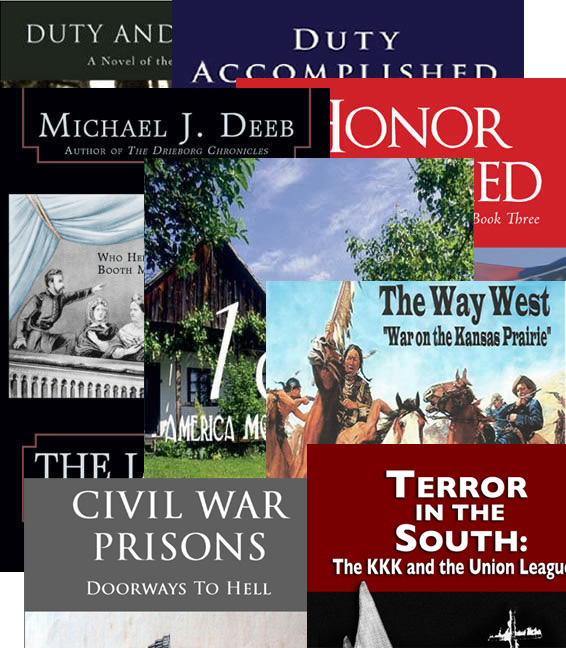
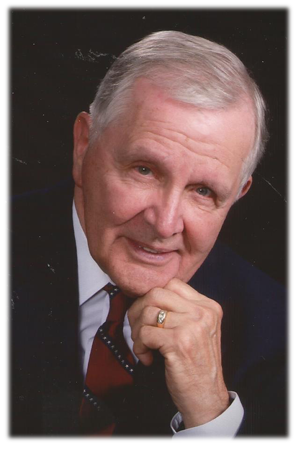
 A Great Read! I couldn’t put this book down once I got started. The detail was great and I really like the main character, Michael. Knowing that so much research went into this book made it exciting to read!
A Great Read! I couldn’t put this book down once I got started. The detail was great and I really like the main character, Michael. Knowing that so much research went into this book made it exciting to read!